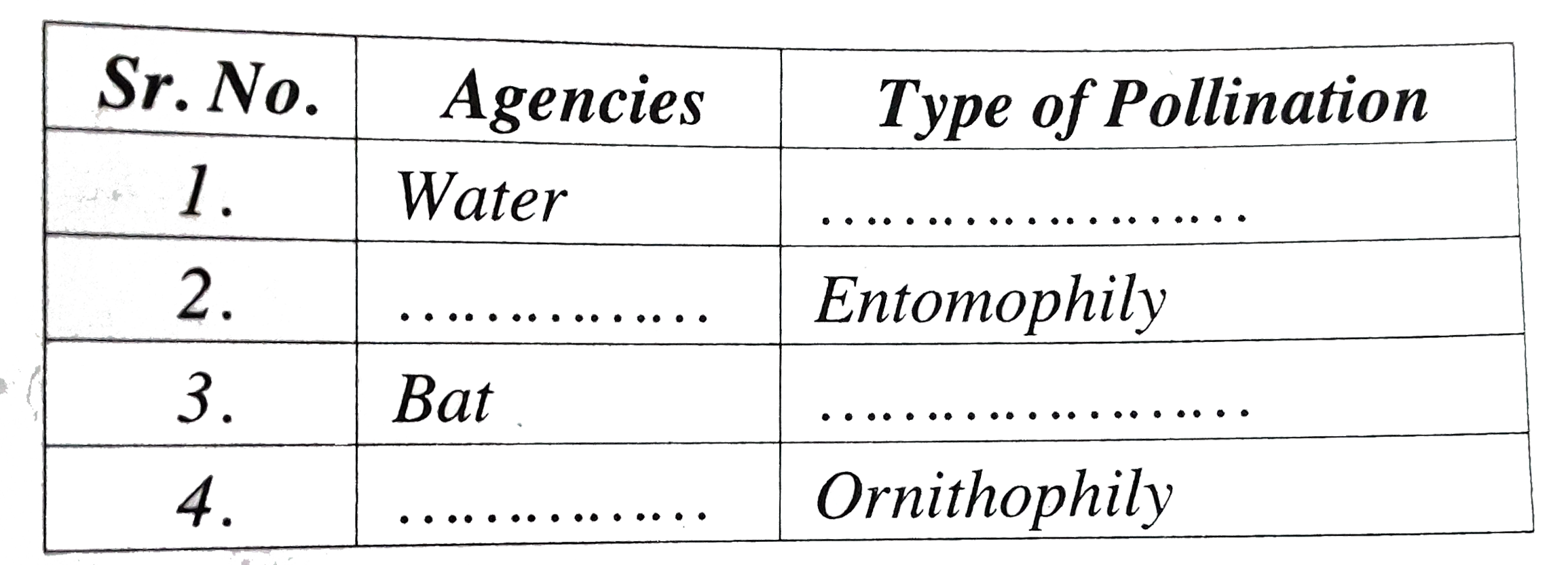Explain outbreeding devises in angiospermic plants.
Step-by-Step Solution
1. Definition of Outbreeding Devices:
Outbreeding devices in angiospermic plants are adaptations that prevent self-pollination, thereby promoting cross-pollination. Cross-pollination is essential for genetic variation.
2. Understanding Pollination:
Pollination is the transfer of pollen grains from the anther (male part) to the stigma (female part) of a flower. Self-pollination occurs within the same flower, while cross-pollination occurs between different flowers.
3. Types of Outbreeding Devices:
- Temporal Separation: This involves the maturation of male and female reproductive parts at different times.
- Protandry: In protandry, the male reproductive part (stamen) matures before the female part (carpel). For example, in sunflowers, pollen is released before the stigma is ready to receive it.
- Protogyny: In protogyny, the female reproductive part matures before the male part. This means the stigma is ready to receive pollen before the pollen grains are ready to be released.
4. Cell Sterility:
Some plants, like orchids, exhibit a mechanism where the pollen grains of the same flower cannot germinate on the stigma of that flower. This genetic mechanism ensures that self-pollination is avoided.
5. Unisexuality:
In unisexual plants, male and female reproductive organs are found in separate flowers or even on different plants. This separation inhibits self-pollination and encourages cross-pollination.
Summary
Outbreeding devices in angiospermic plants include temporal separation (protandry and protogyny), cell sterility, and unisexuality. These adaptations promote cross-pollination and enhance genetic diversity.
---
Outbreeding devices in angiospermic plants are adaptations that prevent self-pollination, thereby promoting cross-pollination. Cross-pollination is essential for genetic variation.
Pollination is the transfer of pollen grains from the anther (male part) to the stigma (female part) of a flower. Self-pollination occurs within the same flower, while cross-pollination occurs between different flowers.
- Temporal Separation: This involves the maturation of male and female reproductive parts at different times.
- Protandry: In protandry, the male reproductive part (stamen) matures before the female part (carpel). For example, in sunflowers, pollen is released before the stigma is ready to receive it.
- Protogyny: In protogyny, the female reproductive part matures before the male part. This means the stigma is ready to receive pollen before the pollen grains are ready to be released.
Some plants, like orchids, exhibit a mechanism where the pollen grains of the same flower cannot germinate on the stigma of that flower. This genetic mechanism ensures that self-pollination is avoided.
In unisexual plants, male and female reproductive organs are found in separate flowers or even on different plants. This separation inhibits self-pollination and encourages cross-pollination.
Outbreeding devices in angiospermic plants include temporal separation (protandry and protogyny), cell sterility, and unisexuality. These adaptations promote cross-pollination and enhance genetic diversity.
Topper's Solved these Questions
- BOOK - NAVNEET PUBLICATION - MAHARASHTRA BOARDCHAPTER - SHORT ANSWER QUESTIONS -I EXERCISE - Chapter 9 : Organisms and Environment - I8videos
SHORT ANSWER QUESTIONS -I
- BOOK - NAVNEET PUBLICATION - MAHARASHTRA BOARDCHAPTER - SHORT ANSWER QUESTIONS -I EXERCISE - Chapter 10 : Origin and Evolution of Life7videos
SHORT ANSWER QUESTIONS -I
- BOOK - NAVNEET PUBLICATION - MAHARASHTRA BOARDCHAPTER - SHORT ANSWER QUESTIONS -I EXERCISE - Chapter 7 : Respiration4videos
SHORT ANSWER QUESTIONS -I
- BOOK - NAVNEET PUBLICATION - MAHARASHTRA BOARDCHAPTER - QUESTION BANK 2021EXERCISE - CHAPTER 15 (4 marks)1videos
QUESTION BANK 2021
- BOOK - NAVNEET PUBLICATION - MAHARASHTRA BOARDCHAPTER - SHORT ANSWER QUESTIONS -IIEXERCISE - Additional Important Questions for Self-practice7videos
SHORT ANSWER QUESTIONS -II
Similar Questions
Knowledge Check
- Question 1 - Select One
Smallest angiospermic plant is—
AWolffiaBVictoriaCRafflesiaDOrchid - Question 2 - Select One
Endosperm of angiospermic plant is :
ATriploidBdiploidChaploidDtetraploid - Question 3 - Select One
Pollination is essential in angiospermic plants because
AIt decreases the time required for fertilization.Bboth of the male and female gametes are non-motile and they need to be brought together for fertilization .Cit is useless process that does not affect the time of fertilization.DBoth A and B
Name the smallest angiospermic plant.
View SolutionMake a list of any three outbreeding devices that flowering plants have developed and explain how they halp to encourage cross-pollination.
View SolutionMake a list of an y three outbreeding devices that flowering plants have developed and explain how they help to encourage cross-pollination
View SolutionPollination is essential in angiosperm plants because
View SolutionPerisperm present in seeds of few angiospermic plant is
View Solution


